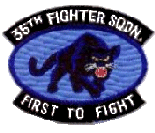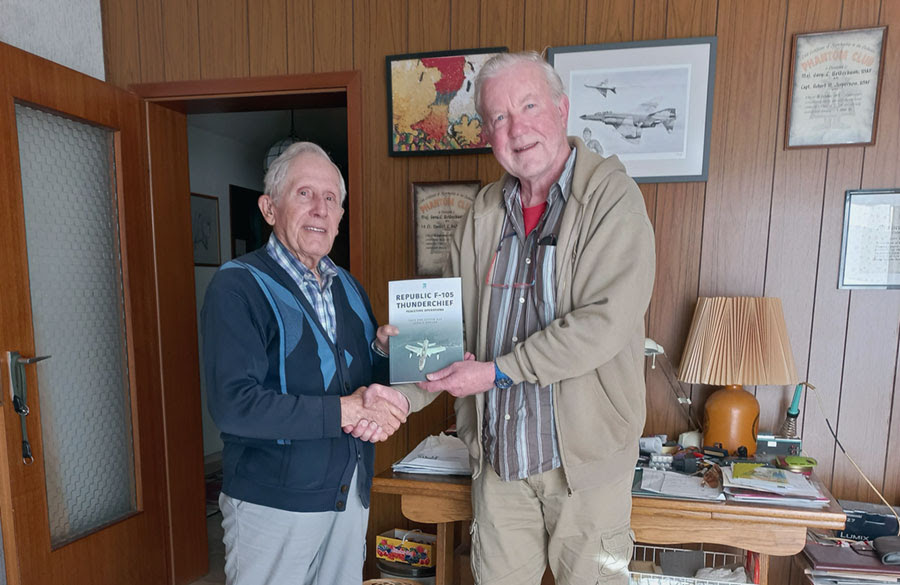The President of the United States
in the name of The Congress
takes pleasure in presenting the
Medal of Honor
to
THORSNESS, LEO K.
Rank and organization: Lieutenant Colonel (then Maj.), U.S. Air Force, 357th Tactical Fighter Squadron. Place and date: Over North Vietnam, 19 April 1967. Entered service at: Walnut Grove, Minn. Born: 14 February 1932, Walnut Grove, Minn.
Citation:
For conspicuous gallantry and intrepidity in action at the risk of his life above and beyond the call of duty. As pilot of an F- 105 aircraft, Lt. Col. Thorsness was on a surface-to-air missile suppression mission over North Vietnam. Lt. Col. Thorsness and his wingman attacked and silenced a surface-to-air missile site with air-to-ground missiles, and then destroyed a second surface-to-air missile site with bombs. In tile attack on the second missile site, Lt. Col. Thorsness’ wingman was shot down by intensive antiaircraft fire, and the 2 crewmembers abandoned their aircraft. Lt. Col. Thorsness circled the descending parachutes to keep the crewmembers in sight and relay their position to the Search and Rescue Center. During this maneuver, a MIG-17 was sighted in the area. Lt. Col. Thorsness immediately initiated an attack and destroyed the MIG. Because his aircraft was low on fuel, he was forced to depart the area in search of a tanker. Upon being advised that 2 helicopters were orbiting over the downed crew’s position and that there were hostile MlGs in the area posing a serious threat to the helicopters, Lt. Col. Thorsness, despite his low fuel condition, decided to return alone through a hostile environment of surface-to-air missile and antiaircraft defenses to the downed crew’s position. As he approached the area, he spotted 4 MIG-17 aircraft and immediately initiated an attack on the MlGs, damaging 1 and driving the others away from the rescue scene. When it became apparent that an aircraft in the area was critically low on fuel and the crew would have to abandon the aircraft unless they could reach a tanker, Lt. Col. Thorsness, although critically short on fuel himself, helped to avert further possible loss of life and a friendly aircraft by recovering at a forward operating base, thus allowing the aircraft in emergency fuel condition to refuel safely. Lt. Col. Thorsness’ extraordinary heroism, self-sacrifice, and personal bravery involving conspicuous risk of life were in the highest traditions of the military service, and have reflected great credit upon himself and the U.S. Air Force.
Read “Commissioned in Hanoi” By Leo K. Thorsness:
Art Cormier, Neil Black, and Bill Robinson showed excellence in the POW camps around Hanoi.
In 1967, there was a “unit” of approximately 300 Americans fighting the Vietnam War from within a Hanoi prison. The unit—later named the 4th Allied POW Wing—was located in the drab North Vietnamese capital. Within this unit, every man had the same job: prisoner of war.
All—except three enlisted airmen—were officers, including me. Our job description was to continue fighting for the United States while imprisoned.
The three enlisted airmen were SSgt. Arthur Cormier, Amn. Arthur Neil Black, and SSgt. William A. Robinson. All were crewmen on helicopters that rescued aircrews from downed aircraft. The three were shot down in 1965.
They were captured, taken prisoner, and ended up in the Hoa Lo prison in Hanoi (the “Hanoi Hilton,” in POW parlance).
Purchase Leo’s book “Surviving Hell: A POW’s Journey” from Amazon.

